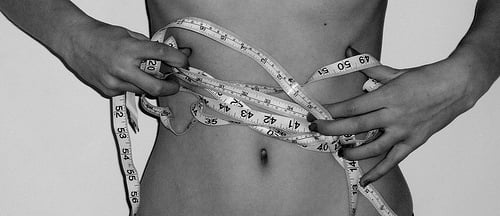Women suffering from anorexia or bulimia portray themselves differently in drawings than those who do not have eating disorders, according to Israeli researchers, who suggest that this discovery can help professionals as a tool for identifying and assessing these dangerous conditions. This has been revealed in a new joint study from the University of Haifa, Soroka University Medical Center in Beersheba and Achva Academic College in the south that has been published in The Arts in Psychotherapy.
“The results of this study show that women suffering or prone to developing eating disorders can be diagnosed with a simple and non-intrusive self-figure drawing assessment,” said Prof. Rachel Lev-Wiesel, head of the University of Haifa’s Graduate School of Creative Art Therapies and a coauthor of the study.
The research, conducted with help from Dr. Jonathan Guez, Shimrit Valetsky, Dr. Diego Kruszewski Sztul and Dr. Bat-Sheva Pener, examined 76 women. Thirty-six of them had been diagnosed as anorexic or bulimic; 20 had no eating disorders but were overweight, and 20 had no eating disorders and were considered of normal weight. Each of the participants completed two standardized questionnaires for screening eating disorders and were then asked to draw themselves (with no guidelines or limitations set for the drawing).
The research team then evaluated the drawings and found various differences between the groups in four aspects. Women suffering from anorexia or bulimia tended to draw a larger neck, a disconnected neck or none at all; the mouth was more emphasized in drawings by women suffering from eating disorders, who also drew wider thighs and and no feet or disconnected feet, compared to the other groups. The study also revealed that those with the disorders tended to omit breasts from their drawings, drew less defined body lines and smaller figures relative to the page size. To assess the reliability of the drawing test, the more pronounced results were compared with the two standardized eating disorders screening tests, and a very strong correlation was found.
“Women suffering from eating disorders usually tend to hide their condition, even from their therapists. They often find it difficult to talk about their problem, so a non-verbal and non-intrusive tool such as a simple request for a self-figure drawing can become an important tool in creative art therapy,” explained Lev-Wiesel.
…
To read the whole story click here
Via http://www.jpost.com
Photo by Charlotte Astrid
Related posts

Israeli Medical Technologies That Could Change The World

Harnessing Our Own Bodies For Side Effect-Free Weight Loss

Missing Protein Could Unlock Treatment For Aggressive Lung Cancer




Facebook comments